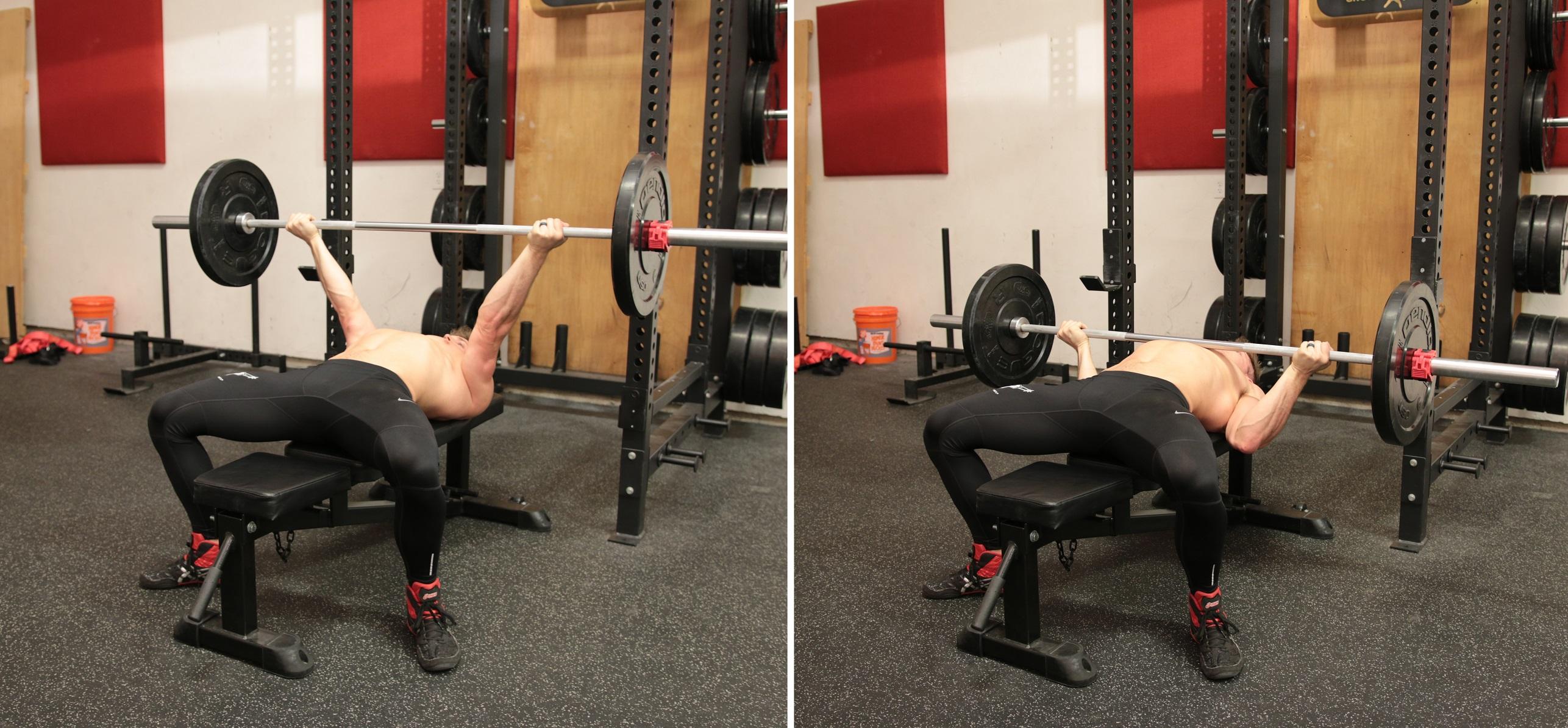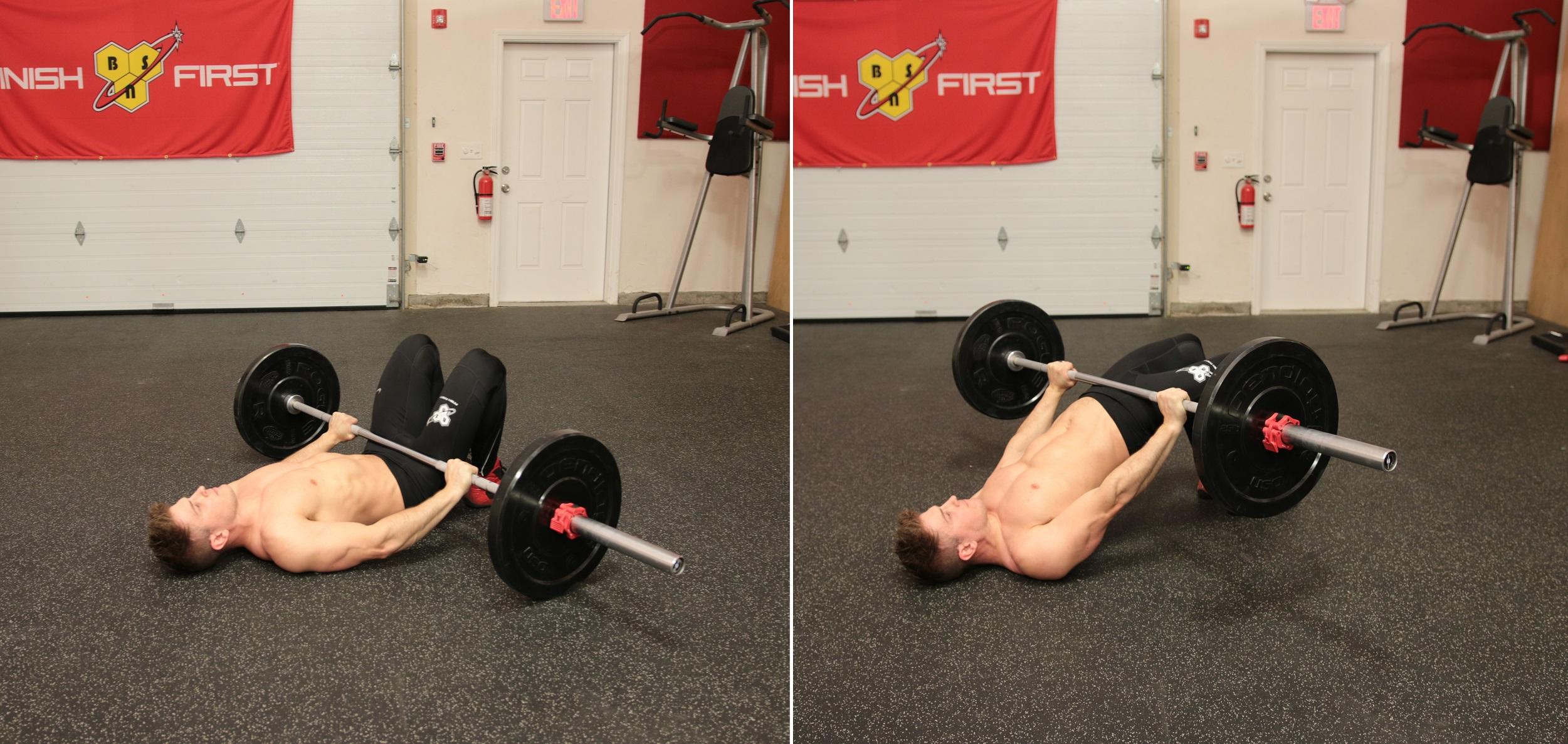3 Underrated Exercises You Should Be Doing
Don't Forget These!
Whether your goal is to gain muscle, shred fat or build strength, the majority of your efforts in the gym should be focused around heavy compound movements and progressive overload. That’s where 95% of your results are going to come from and I’m not here to bullshit you about “3 weird exercises you’ve never heard before” that probably won’t make any difference in your overall physique. Instead, I want to address 3 MAJOR compound movements that are often underutilized and will help you not only build size and strength but can also correct muscle imbalances and prevent injuries.
Exercise #1: Reverse-Grip Barbell Bench Press
The upper chest is usually a stubborn area to grow for a lot of guys and most people usually go for an incline bench press variation to try to improve this area. But is this your BEST option? The answer is no. In fact, a far superior option is the reverse barbell bench press and you can do it either on a flat or incline bench. This is because the mechanics of this exercise make it very effective at targeting the upper chest, even when you’re using the flat variation, because with your hands reversed on the barbell the focus of the resistance will shift from your front delts to your upper chest.

In fact, if you’re interested in a more in-depth comparison of why the reverse press works better than an incline press, you can check out my VERSUS video I did on this topic later! It goes over the mechanics of both exercises and clearly demonstrates which one you should be focusing on.
But the main reason why you should include this exercise in your program becomes very apparent when you examine the anatomy of the human body. Any standard-grip press, including the incline barbell press will place your shoulders in an internally rotated position which is a vulnerable position for the shoulder joint. Especially if you’re not retracting your scapula before the start of every set. Even with proper form, it can still become an issue when lifting super heavy weight if your form begins to break down.
But with the reverse-grip bench press, your shoulders are externally rotated which is a far superior position to be in when benching. This means joints are more open and less cramped up which greatly reduces the chance for shoulder impingement or an ACL injury.
So, if you can perform an exercise like the reverse-grip bench press which is more effective than the incline bench press, but with less risk for injury, why wouldn’t you do it?
Now I want to go over proper form. The set-up is the same as for a regular bench press. Make sure your shoulder blades are retracted, and that you are keeping them down and back. When you lay back, only have half of your body on the bench, and then slide your way up to really retract and squeeze your shoulder blades tight together.
Keep a slight arch in your back, point your knees out, and squeeze your glutes and core tight. You’re then going to grab the barbell OUTSIDE of shoulder width. Your palms should be facing your face when you grip the bar, and you can then un-rack the weight. Bring it down to just below the bottom of your chest*, and then press it back up to the starting position. Keep in mind that the bar should ALWAYS travel in a straight line (do not bring it over your shoulders), and if you experience wrist pain, make sure you are twisting your elbows IN, and not letting them flare out.
*NOTE: The form remains the same if you do a reverse grip press on an incline bench, however, the bar will come just above the bottom of your chest.
- Add To Your Next CHEST WORKOUT!
- 4 sets: 6 – 8 reps
- I personally like to do this FIRST or SECOND in my routine
Also, I know some of you are going to ask if you can use dumbbells for this movement and to be honest I would stay away from them. For the reverse-grip bench press to target the upper chest you need to have a WIDE-GRIP and for most people as soon as fatigue sets in with the dumbbells, you can hold them wide-enough to overload the chest with heavy weight and the movement because more of a tricep press.
Exercise #2: Dumbbell Lat Pull-Over
While the majority of your back size and strength is going to come from deadlifts, rows and pull-ups, your workouts should always include a pull-over type exercise such as the dumbbell pull-over or the cable push-down. Now, despite being a compound movement, the dumbbell pull-over is going to heavily focus on your lats and more specifically, it will emphasize back width. So, if you already have some thickness going on but you’re interested more in more width, pull-overs should be a staple in your back workout.
But if you want to include pullovers in your back workouts, you should know exactly how to perform them because depending on the actual form used, you can end up training your chest or just not target the lats as hard as you potentially could.
So first things first, you are going to lay FLAT on the bench. You will see people in the gym laying off the side of a bench, but you’ll be able to maximize the movement more by laying lengthwise on a bench. It will be much easier to maintain a tight core. Once you are laying down, retract your scapula, and you should be keeping your glutes and core tight once more, like we did when setting up for the reverse grip press.

Lower the dumbbell so that it stays as close to your face as possible. You should be flaring your elbows with this movement. Bring the dumbbell down as far as you can (to the floor is ideal if you have good shoulder mobility), and then bring it back up by again keeping it close to your head, and your elbows flared out. Make sure you really feel your lats pull on every single repetition.
- Add To Your Next BACK WORKOUT!
- 4 sets: 6 – 8 reps
- I personally like to do this as a FINISHER
Now if you want to gain more of an understanding of how to utilize this exercise for your chest, I will link you to my comparison video. Lastly, remember that this is an excellent movement to include in your workouts if your shoulder mobility needs improving, as it provides extreme shoulder extension successfully mobilizing the joint and improved shoulder extension can help with squats, overhead presses, pullups, and of course your everyday posture!
Exercise #3: Barbell Glute Bridge
Now I notice a lot of dudes are usually not too fond of this exercise and I can’t understand why. Aside from building bigger and stronger glutes, if you are looking for more explosive power through your hips to increase your squat and deadlift, then this exercise should be a STAPLE in your weekly routines.
Most people, especially women, who want to target their glutes usually use some sort of glute kickback machine or even do glute kickbacks with their bodyweight extending one leg into the air at a time. This is not how you progressively overload your muscles for growth and it’s definitely not how you get the best results. Remember that your glutes are powerful, explosive muscles and need to be trained with intensity.
Finally, for those of you with hip or lower back pain who might have a slight case of Anterior Pelvic Tilt, this exercise will work wonders for you. This is because it will force your glutes to work synergistically with your hamstrings and abs and this is exactly how you correct Anterior Pelvic Tilt.
To perform this exercise, lie flat on the floor, directly underneath a padded barbell*, with your feet close to your glutes. Place the bar directly on top of your hips and lightly grab the bar to ensure it doesn’t roll up or down while you’re performing the movement. In one fluid explosive motion, push your pelvis up, extend your hips, activating the glutes and hamstrings. Using a slow negative, return to the starting position and repeat for reps. Make sure that you ALWAYS have hip hyper extension to ensure you are utilizing full range of motion.

NOTE: If you don’t have a pad, or don’t need one, that’s fine, just make sure the bar is across your HIPS, NOT lower.
- Add To Your Next Leg WORKOUT!
- 4 sets: 6 – 8 reps
- I personally like to do this AFTER SQUATS
Conclusion
So there you have it! Three exercises that you should definitely start incorporating into your workouts. And remember, not only will these help you in terms of building muscle and getting stronger, but they are all amazing exercises to help you improve mobility as well. You can’t go wrong with these!








